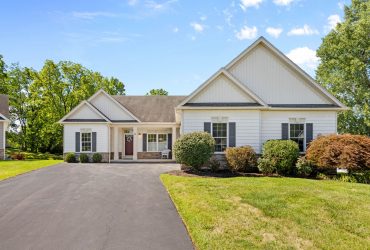168 Maple Avenue, Irondequoit NY (Sold)
Terri Williams Rochester Realtor
Howard Hanna Real Estate Services
Victor, NY, 14564
United States
Equity Builder Alert!! BACK ON THE MARKET!! Buyer was unable to get financing. Do not miss this opportunity to build quick equity in this four bedroom, one and a half bath home in East Irondequoit. This spacious cape cod is ready for your finishing touches. New architectural roof approx one year old. Newer Rheem furnace. Some vinyl windows. Hardwood floors under carpet throughout first floor. Partially finished basement with half bath & fully fenced backyard round out this home.
HISTORY OF IRONDEQUOIT
The history of Irondequoit can be divided into four phases.
 The third phase began with the development of trolley and rail lines through Irondequoit in the 1870’s. Thousands of summer visitors flocked to the resorts on Lake Ontario and Irondequoit bay. In order to insure regular passenger traffic, the railroad rented wooden platforms on the bluffs overlooking the lake at the end of St. Paul Boulevard and a village within a village developed. The tent city was known as “White City.” It had its own governing association, electricity and water supply. The electric lights and water supply were supplied by the railroad. At the mouth of the bay was the famous resort of Sea Breeze with hotels and amusement rides. The park was also owned by the railroad. On the shores of the Bay, at least a dozen hotels at one time or the other offered meals, rooms, boats, fishing tackle and, like the Glen Haven, elaborate accommodations of the resort variety. The area was known as the “Coney Island of western New York”.
The third phase began with the development of trolley and rail lines through Irondequoit in the 1870’s. Thousands of summer visitors flocked to the resorts on Lake Ontario and Irondequoit bay. In order to insure regular passenger traffic, the railroad rented wooden platforms on the bluffs overlooking the lake at the end of St. Paul Boulevard and a village within a village developed. The tent city was known as “White City.” It had its own governing association, electricity and water supply. The electric lights and water supply were supplied by the railroad. At the mouth of the bay was the famous resort of Sea Breeze with hotels and amusement rides. The park was also owned by the railroad. On the shores of the Bay, at least a dozen hotels at one time or the other offered meals, rooms, boats, fishing tackle and, like the Glen Haven, elaborate accommodations of the resort variety. The area was known as the “Coney Island of western New York”.OUR COMMUNITY
Irondequoit aptly means “where the land and waters meet” for the town is bordered by Lake Ontario, the Genesee River, Irondequoit Bay, the 1000-acre Durand-Eastman Park, and the City of Rochester.
Terri Williams Rochester Realtor
Beyond the Sale: Strategic Guidance for Life’s Biggest Moves
Buying or selling a home isn't just a transaction—it’s a defining chapter in your life. It’s emotional, it’s financial, and it’s deeply personal. That’s why you need more than just an agent. You need a fierce advocate & strategic partner who understands the stakes and knows how to deliver.
With years of experience, deep market knowledge, and a relentless commitment to my clients, I provide the clarity, guidance, and results you need to move forward with confidence. Whether you're navigating your first home sale or building your investment portfolio, My clients don’t get cookie cutter solutions, they get tailored plans, transparent communication and results. I’m here with honest advice, up-to-the-minute insight, and a steady hand through every step of the process.
Helping people own real property, build wealth, and leave a legacy they’re proud of isn’t just business…it’s purpose.
email: [email protected]
Howard Hanna Real Estate Services
Victor , NY 14564
United States



